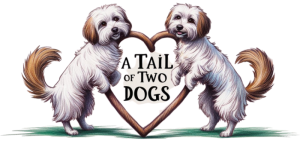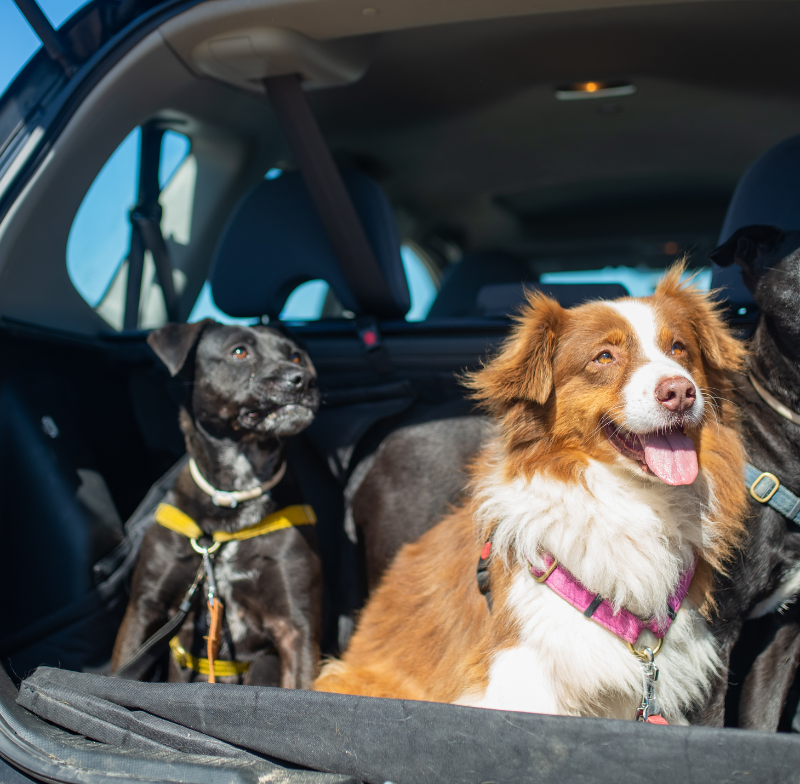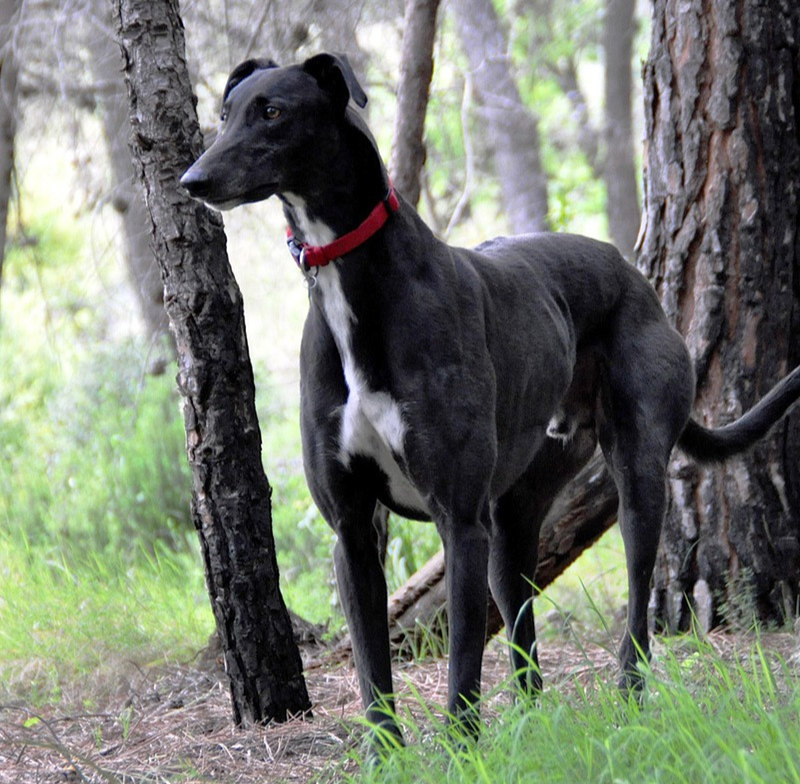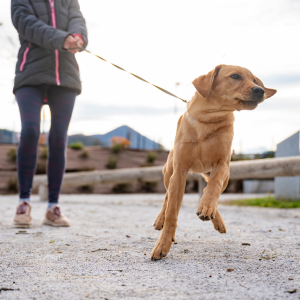When your female dog is in season, also known as being “in heat,” it can be a challenging time for both you and your furry friend. Understanding what to expect, how to manage her needs, and ensuring her comfort are crucial for her well-being. Whether you’re a first-time dog owner or experienced with pets, this guide will provide all the necessary information about how to help and care for your dog when she is in season.
Understanding the Signs That Your Dog Is in Season
Knowing the signs that your dog is entering her season is essential to prepare for what’s ahead and also enable you to properly care for her. The average age for a dog to have her first season is between six and twelve months, although this can vary depending on the breed. Smaller breeds may start as early as six months, while larger breeds may not experience their first heat until they are eighteen months old.
One of the first signs of your dog being in season is a change in behavior. She may become more affectionate or clingy, seeking extra attention from you. On the other hand, some dogs may display moodiness or irritability. Physically, you’ll notice swelling of the vulva, which can range from mild to very pronounced depending on the dog. There will also be a bloody discharge, which might start as light spotting and gradually increase. This discharge may turn a lighter color as the season progresses.
Other signs include increased urination, as your dog uses scent marking to signal her readiness to mate. You might also notice male dogs showing a sudden and intense interest in her. Pay attention to these early signs so you can begin taking steps to care for your dog properly.
How Long Does a Dog’s Season Last?
A typical season lasts about three weeks, although it can range from two to four weeks depending on the dog. It is divided into four stages: proestrus, estrus, diestrus, and anestrus. The first two stages are the most noticeable to dog owners.
Proestrus is the beginning of the heat cycle and lasts around 7-10 days. During this stage, your dog will exhibit swelling of the vulva and produce bloody discharge. She will likely not be receptive to male dogs yet. The estrus stage follows, lasting another 5-10 days. This is when your dog becomes fertile and may show interest in mating, with her discharge becoming lighter and her behaviour changing. The final stages, diestrus and anestrus, are the non-fertile phases where your dog’s body returns to normal.
Keeping track of your dog’s cycle using a calendar can help you anticipate when her next season will occur. Typically, dogs come into season twice a year, about six months apart, but this can vary between individuals.
How to Help Your Dog During Her Season
Caring for a dog in season requires patience and preparation. Here are some key tips to ensure she stays comfortable and healthy:
1. Keep Her Comfortable at Home
Your dog might feel more tired or restless during her season, so it’s important to create a calm and comfortable environment for her. Set up a quiet space where she can retreat if she feels overwhelmed. Provide her with a cozy bed and keep her favourite toys nearby to reduce stress.
2. Use Protective Measures to Manage Discharge
Managing your dog’s discharge is an important part of caring for her during her season. You can use doggy diapers or heat pants to prevent messes around your home. These are widely available online or at pet stores. Be sure to change them regularly to maintain hygiene and prevent irritation. If your dog doesn’t tolerate wearing diapers, place washable blankets or towels in her favourite resting spots.
3. Avoid Walks in Busy Areas
When your dog is in season, her scent will attract male dogs, which can lead to unwanted attention or altercations. To minimize this, avoid walking her in areas where other dogs are likely to be off-leash. Instead, take her for walks during quieter times of the day or stick to enclosed private spaces, such as your garden, where she can exercise safely.
4. Supervise Her Outdoors
Even if you have a secure garden, it’s essential to supervise your dog while she’s outside during her season. Male dogs have been known to jump fences or find other creative ways to reach a female in heat. Keep a close eye on her to prevent any unwanted interactions.
How to Care for Your Dog’s Hygiene and Health
1. Maintain Good Hygiene
Cleanliness is crucial when your dog is in season. Use a damp cloth or pet-safe wipes to gently clean her vulva if needed, especially if she’s unable to groom herself properly. Avoid using human products, as they can irritate her sensitive skin.
2. Monitor Her Behavior
Keep an eye on your dog’s behavior throughout her season. While changes in mood and energy levels are normal, sudden signs of distress, excessive licking, or lethargy could indicate a problem. If you notice anything unusual, contact your veterinarian for advice.
3. Provide a Balanced Diet
A healthy diet is always important, but it’s particularly crucial when your dog is in season. She may have a reduced appetite, so consider offering smaller, more frequent meals if needed. High-quality dog food with the right balance of nutrients will help support her energy levels and overall well-being.
Tips to Prevent Accidental Pregnancies
If you’re not planning to breed your dog, it’s essential to take steps to prevent accidental pregnancies during her season. Keep her on a leash whenever she’s outdoors, even in your garden, to ensure she doesn’t escape. Avoid interactions with male dogs, and if possible, limit her outdoor time to essential walks only.
Consider speaking with your vet about spaying your dog. Spaying not only prevents future heat cycles but also reduces the risk of certain health issues, such as mammary tumours and uterine infections.
How to Manage Your Dog’s Emotional Needs
Dogs in season often require extra emotional support from their owners. Be patient and understanding as she navigates this hormonal phase. Spend quality time with her by playing gentle games or engaging in calm activities she enjoys. Offering her affection and reassurance will help her feel secure and loved.
If she becomes more anxious or restless, calming products such as pheromone sprays, diffusers, or natural supplements may help. Always consult your vet before introducing any new products to ensure they are safe and appropriate for your dog.
Preparing for Future Seasons
To better prepare for future seasons, consider keeping a journal of your dog’s heat cycles. Note the dates and any behavioural changes you observe. This will help you recognize patterns and anticipate her needs in advance. If your dog’s heat cycles are irregular or overly frequent, consult your vet, as this could indicate underlying health issues.
Learning to care for your dog during her season may seem daunting, but with the right knowledge and preparation, it can be a manageable experience. By understanding the signs of her season, providing comfort and support, and taking necessary precautions, you can ensure her well-being during this time. Whether it’s her first season or one of many, your attentiveness and care will make all the difference. Remember, if you have any concerns about your dog’s health or behaviour during her season, don’t hesitate to seek advice from your veterinarian.
We hope you enjoyed this post on how to help and care for your dog when she is in season. For something similar, see How to Prepare for Newborn Puppies When Your Dog Is Pregnant.
Discover more from A Tail of Two Dogs
Subscribe to get the latest posts sent to your email.





Leave a Reply